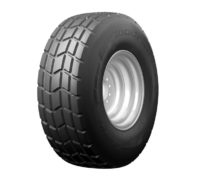Canadian researchers present new method for dissolving tyre rubber
A team of chemists at Canada’s McMaster University claim to have discovered an innovative way to break down and dissolve the rubber used in tyres. They believe their process could lead to more efficient methods of recycling. The chemists describe their research into breaking down the disulphide bonds resulting from vulcanisation in an article published in sustainable technologies journal Green Chemistry (Issue 1, 2020).
The method addresses the enormous environmental burden posed by the 3 billion tyres or so manufactured worldwide each year. Most of those will end up in landfills or storage facilities, ultimately leaching contaminants into the ecosystem.
Tyres are produced using a non-renewable resource and are in many instances a single-use product. While some are used as fuel in the cement industry or broken down into crumbs to use as fillers in asphalt, cement or artificial turf, those wishing to recover the petroleum-based polymers from which they are made have faced many difficulties.
“The chemistry of the tyre is very complex and does not lend itself to degradation – for good reason,” says Michael Brook, a professor in the Department of Chemistry & Chemical Biology at McMaster and lead author of the study. “The properties that make tyres so durable and stable on the road also make them exceptionally difficult to break down and recycle.”
The method of tyre vulcanisation patented by Charles Goodyear involves combining sulphur with natural rubber, which forms bridges between the natural polymers and transforms the mixture from fluid to rubber.
In the paper, researchers describe a process to efficiently break down the polymeric oils by breaking the sulphur-to-sulphur bond. Brook likens the structure to a piece of fishnet.
“We have found a way to cut all the horizontal lines so instead of having a net, you now have a large number of ropes, which can be isolated and reprocessed much more easily,” he says.
The research team is confident that the new method could help to eliminate and prevent the major environmental concerns and dangers posed by stockpiled tyres. Yet while promising, researchers caution that the new method has some limitations because it is expensive for industrial applications.
“We’re working on it, but this is the first major step. This process closes the loop on automotive rubber, allowing old tyres to be converted into new products,” says Brook.



Comments